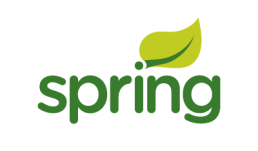Learn Spring Tutorial – javatpoint
Thank you for reading this post, don't forget to subscribe!

This spring tutorial offers in-depth ideas of Spring Framework with simplified examples.
It was developed by Rod Johnson in 2003. Spring framework makes the simple improvement of JavaEE software.
It’s useful for freshmen and skilled individuals.
Spring Framework
Spring is a light-weight framework. It may be regarded as a framework of frameworks as a result of it offers assist to varied frameworks reminiscent of Struts, Hibernate, Tapestry, EJB, JSF, and so forth.
The framework, in broader sense, may be outlined as a construction the place we discover answer of the assorted technical issues.
The Spring framework includes a number of modules reminiscent of IOC, AOP, DAO, Context, ORM, WEB MVC and so forth. We’ll study these modules in subsequent web page. Let’s perceive the IOC and Dependency Injection first.
Inversion Of Management (IOC) and Dependency Injection
These are the design patterns which are used to take away dependency from the programming code. They make the code simpler to check and keep.
Let’s perceive this with the next code:
In such case, there may be dependency between the Worker and Handle (tight coupling). Within the Inversion of Management state of affairs, we do that one thing like this:
Thus, IOC makes the code loosely coupled. In such case, there is no such thing as a want to switch the code if our logic is moved to new surroundings.
In Spring framework, IOC container is accountable to inject the dependency. We offer metadata to the IOC container both by XML file or annotation.
Benefit of Dependency Injection
- makes the code loosely coupled really easy to keep up
- makes the code simple to check
Benefits of Spring Framework
There are lots of benefits of Spring Framework. They’re as follows:
1) Predefined Templates
Spring framework offers templates for JDBC, Hibernate, JPA and so forth. applied sciences. So there is no such thing as a want to jot down an excessive amount of code. It hides the fundamental steps of those applied sciences.
Let’s take the instance of JdbcTemplate, you needn’t write the code for exception dealing with, creating connection, creating assertion, committing transaction, closing connection and so forth. You have to write the code of executing question solely. Thus, it save plenty of JDBC code.
2) Unfastened Coupling
The Spring functions are loosely coupled due to dependency injection.
3) Simple to check
The Dependency Injection makes simpler to check the applying. The EJB or Struts software require server to run the applying however Spring framework would not require server.
4) Light-weight
Spring framework is light-weight due to its POJO implementation. The Spring Framework would not pressure the programmer to inherit any class or implement any interface. That’s the reason it’s stated non-invasive.
5) Quick Growth
The Dependency Injection function of Spring Framework and it assist to varied frameworks makes the simple improvement of JavaEE software.
6) Highly effective abstraction
It offers highly effective abstraction to JavaEE specs reminiscent of JMS, JDBC, JPA and JTA.
7) Declarative assist
It offers declarative assist for caching, validation, transactions and formatting.
Spring Index
Spring Tutorial
Spring in IDE
Dependency Injection
Spring AOP
Spring JdbcTemplate
Spring ORM
SPEL
Spring MVC
Spring MVC Kind
Spring MVC Functions
Spring MVC Validation
Spring MVC Tiles
Spring Remoting
Spring OXM
Spring Java Mail
Spring Internet
Spring Safety Tutorial
Spring Boot
Spring Interview
Spring Quiz
Reference Hyperlinks
http://www.springsource.org/
http://en.wikipedia.org/wiki/Spring_Framework
![Complete React Native in 2021: Zero to Mastery [with Hooks]](https://seriestutorials.com/wp-content/uploads/2023/12/Complete-React-Native-in-2023-Zero-to-Mastery-with-Hooks-390x205.webp)

